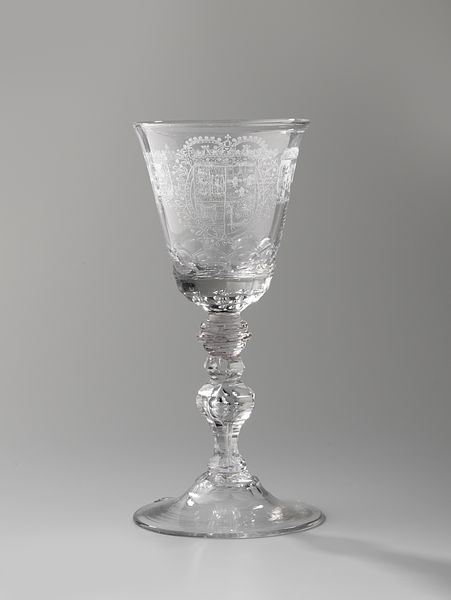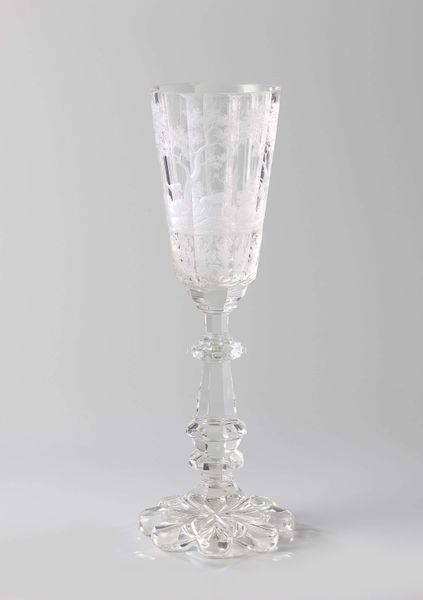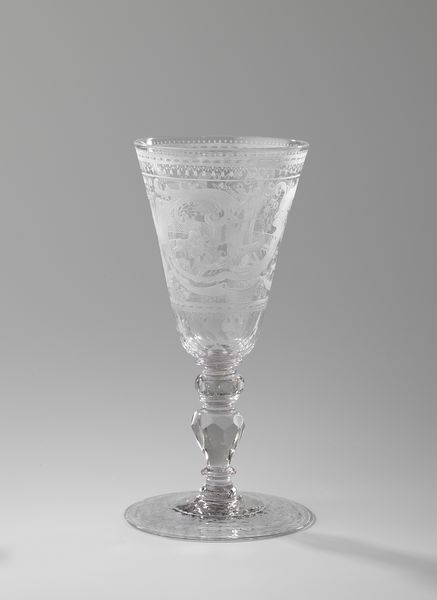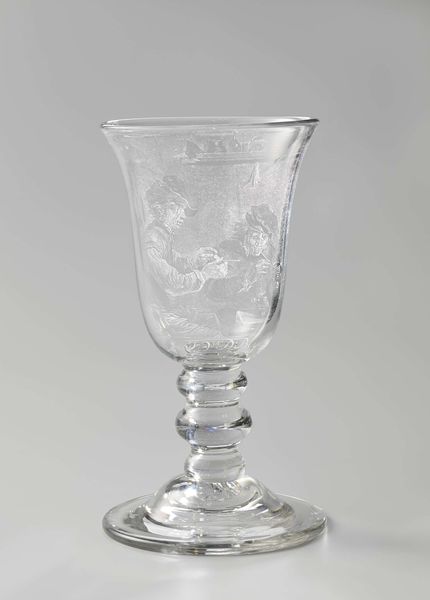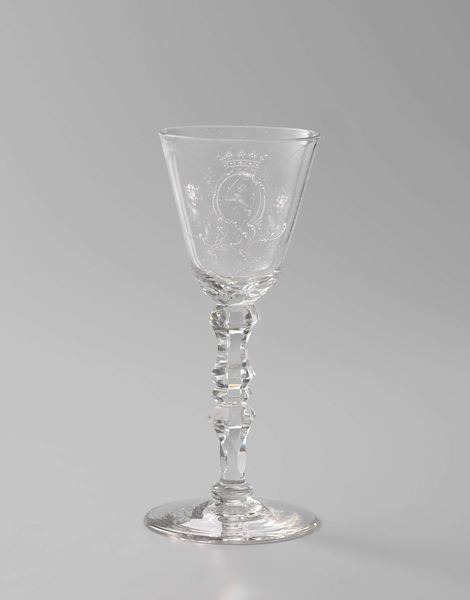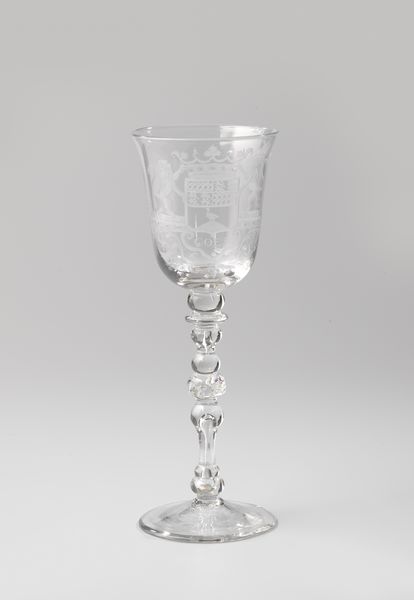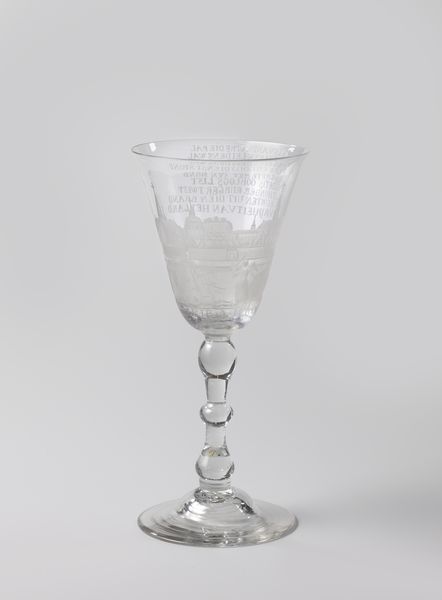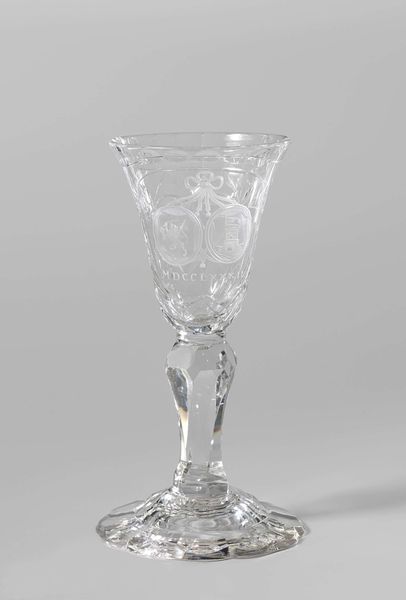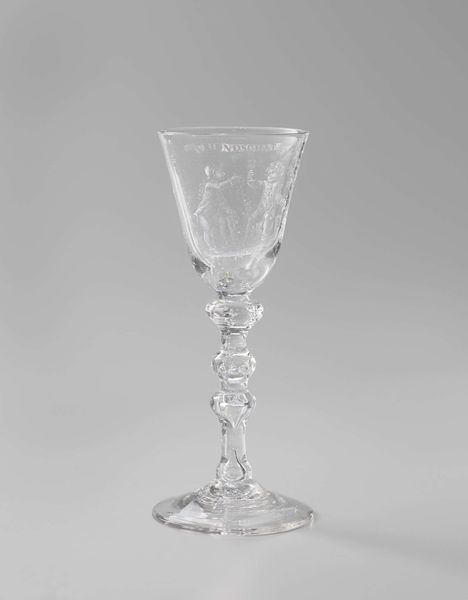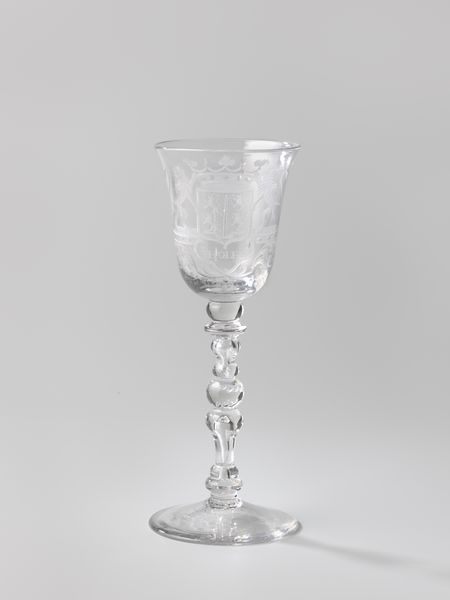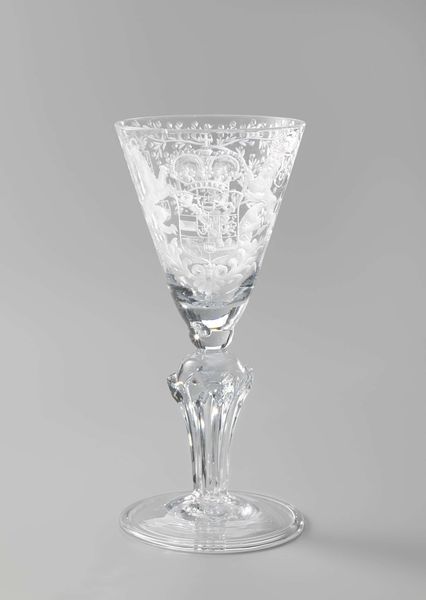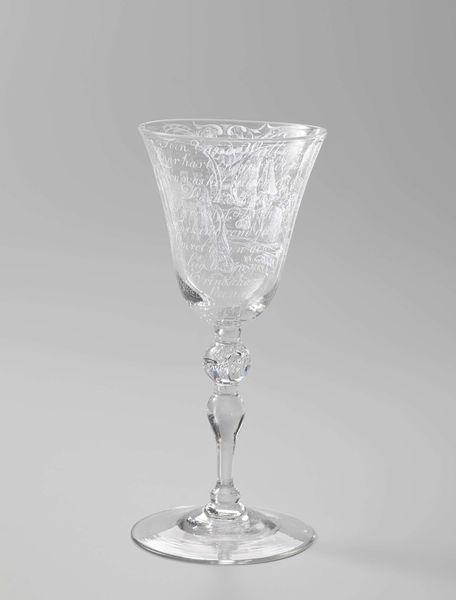
glass, engraving
#
baroque
#
glass
#
ceramic
#
engraving
Dimensions: height 30.0 cm, diameter 13.5 cm, diameter 13.5 cm
Copyright: Rijks Museum: Open Domain
Curator: This meticulously crafted wine glass, created around 1733, stands as a testament to Baroque artistry in glass engraving. Its delicate form and intricate details offer a fascinating glimpse into the material culture of the era. Editor: It's beautiful, but in a severe way. The ornamentation seems almost like an aggressive display of status. All that intricate glasswork must have required enormous skill, yet its fragility suggests how quickly social hierarchies can crumble. Curator: Exactly. The production of such an object indicates a highly specialized division of labor. Glassmaking and engraving were distinct crafts, and this piece would have involved the expertise of multiple artisans. It prompts us to consider the socioeconomic structure that sustained such specialized work. The materials themselves, sourced and traded, further enrich our understanding. Editor: I find myself wondering who this was made for. Who would commission or own something this precious, and what messages was it intended to convey? What ideologies, norms or power dynamics were on display at gatherings or ceremonies that made use of this chalice? Curator: Given its style, this vessel most likely embellished a table set for European aristocracy. We should take notice of how each section—the bowl, the stem, and the base—has different qualities requiring various manipulations. And then it was enhanced by precise carving. It reminds me of elaborate furniture or architecture, where similar complexities are observed in workshops of those centuries. Editor: Absolutely, objects like this played an active role in performative displays of identity and cultural capital. Even something seemingly functional like a glass could become a battleground for establishing class or asserting particular socio-political ideals, such as ideas about gender roles or colonialism at this time. Curator: Considering that these handcraft methods have slowly declined under modern production techniques, this kind of craftsmanship reflects specific relations to labor that must be examined to gain better insight into craft histories. Editor: That's a salient point. Engaging with this work as an art object means also understanding its production as a specific historical mode of crafting social identities and, sometimes, solidifying inequality. Acknowleging these intersecting roles makes objects like this resonate today. Curator: Indeed, from process to consumption, its an elegant item revealing much about our relationship with crafted objects and the systems behind it. Editor: Yes. This is more than just a beautiful glass—it's a symbol loaded with social and historical meaning.
Comments
rijksmuseum about 2 years ago
⋮
This glass belonged to a small society in Gorinchem, called Den Negenden (‘The Ninth’). Its members dined together monthly, when a toast was drunk with this glass. It is engraved with the names of the society’s members, the coats of arms of the Republic of the United Provinces, the province of Holland and the town of Gorinchem, as well as female figures representing Harmony, Reason, Counsel and Patriotism.
Join the conversation
Join millions of artists and users on Artera today and experience the ultimate creative platform.
